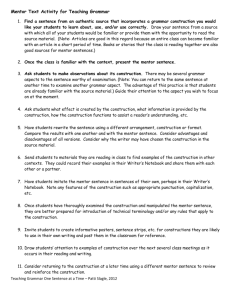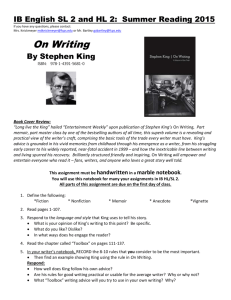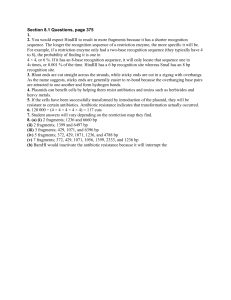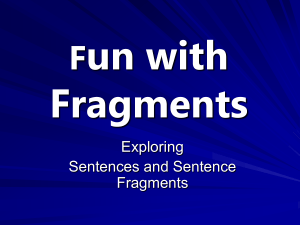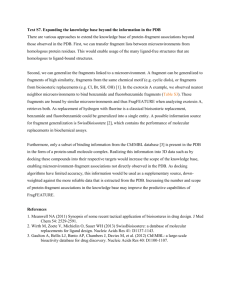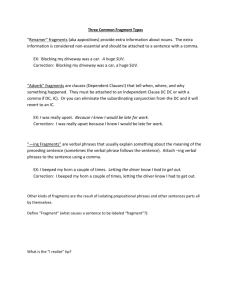Katie Kunz July 25, 2011 Demonstration Lesson: Forbidden and
advertisement
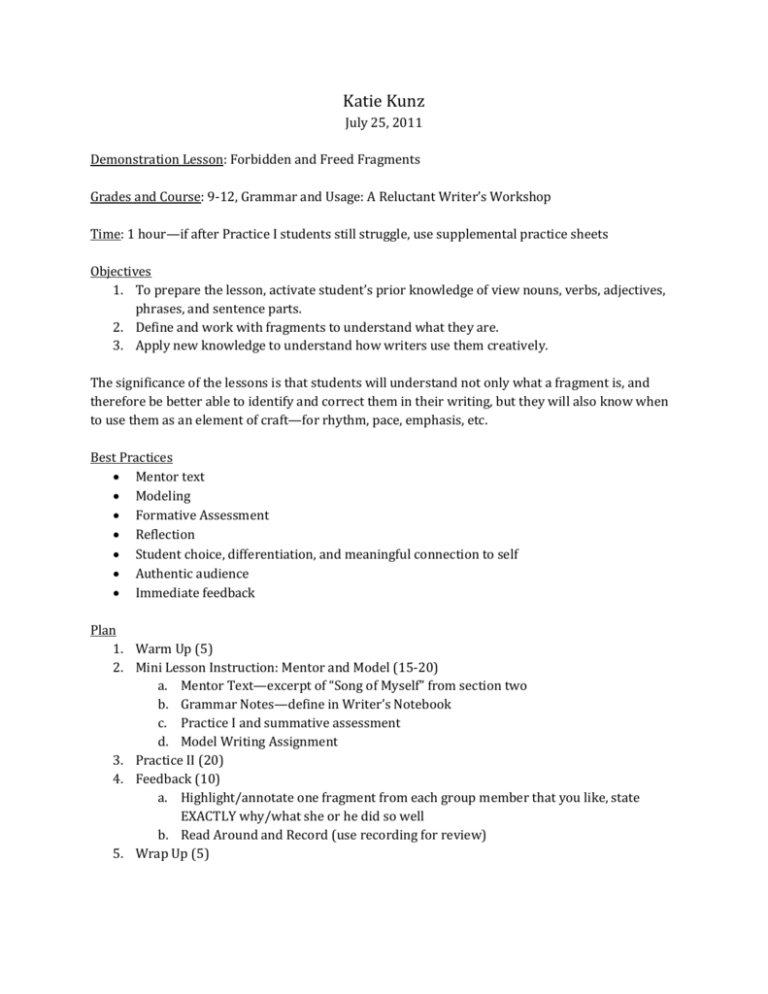
Katie Kunz July 25, 2011 Demonstration Lesson: Forbidden and Freed Fragments Grades and Course: 9-12, Grammar and Usage: A Reluctant Writer’s Workshop Time: 1 hour—if after Practice I students still struggle, use supplemental practice sheets Objectives 1. To prepare the lesson, activate student’s prior knowledge of view nouns, verbs, adjectives, phrases, and sentence parts. 2. Define and work with fragments to understand what they are. 3. Apply new knowledge to understand how writers use them creatively. The significance of the lessons is that students will understand not only what a fragment is, and therefore be better able to identify and correct them in their writing, but they will also know when to use them as an element of craft—for rhythm, pace, emphasis, etc. Best Practices Mentor text Modeling Formative Assessment Reflection Student choice, differentiation, and meaningful connection to self Authentic audience Immediate feedback Plan 1. Warm Up (5) 2. Mini Lesson Instruction: Mentor and Model (15-20) a. Mentor Text—excerpt of “Song of Myself” from section two b. Grammar Notes—define in Writer’s Notebook c. Practice I and summative assessment d. Model Writing Assignment 3. Practice II (20) 4. Feedback (10) a. Highlight/annotate one fragment from each group member that you like, state EXACTLY why/what she or he did so well b. Read Around and Record (use recording for review) 5. Wrap Up (5) This lesson may not necessarily be useful for the whole group. For example, if the teacher notices that only a small group of students struggle with fragments, it could be a small group lesson during practice writing time. In that case, either assign Practice Two as homework, or omit it. Although this lesson could be adapted to fit in at any time during a curriculum, it does presuppose that students have knowledge of certain parts of speech, phrases, and sentence parts. It usually works best in a unit of sentence study, or after sentence parts are taught and understood. Related Resources If students are struggling, or are simply younger than mine, one thing I’ve done that helps them grasp the concept of fragments is use a visual—a mosaic, a volcanic eruption. I also have a doc cam, so when students are finishing their work, they may display it for the whole class. If I notice exemplary fragments or big mistakes, I will collect and display—anonymously—their writing. I also use the doc cam to show my writer’s notebook work. Mechanically Inclined by Jeff Anderson gave me the idea for mentor texts. He seems like a really great middle school teacher. I often refer to him for ideas. Kelly Gallagher’s book Teaching Adolescent Writer’s gave me the idea for a writer’s notebook and for ways to teach to small groups, writing in front of students, and to relax on the assessment aspect. Extensions or Adaptations Use a different mentor text for younger students. Teach to small group. Have students remix a longer work they’ve already done into fragments and compare and contrast. For additional information, contact katherinekunz@hotmail.com. Or call me at 612-437-1806. Thank you!

